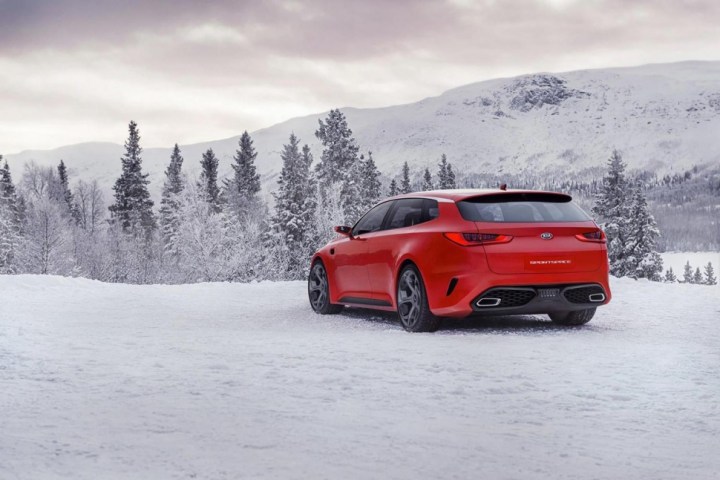
The station wagon is expected to borrow more than a handful of styling cues from the Sportspace concept (pictured) that was presented earlier this year at the Geneva Motor Show. That means it will look strikingly similar to the Optima from the tip of the front bumper to the B-pillar. Beyond that, it will gain a longer roof line, a rakish, almost shooting brake-like D-pillar, and sharp horizontal tail lamps.
Mechanically, the wagon will be all but identical to its sedan counterpart, meaning it will be available with gasoline- and diesel-burning four-cylinder engines pulled straight from the Kia parts bin. On the Old Continent, the range-topping, GT-badged wagon will benefit from a turbocharged 2.0-liter four-banger tuned to make 241 horsepower at 6,000 rpm and 260 pound-feet of torque from 1,350 to 4,000 rpm.
The turbo four sends the sedan from zero to 62 mph in 7.4 seconds, and on to a top speed of 150 mph. The wagon will be a little bit slower because it will inevitably be heavier.
On the other end of the spectrum, the plug-in hybrid model will put more of an emphasis on efficiency than on sportiness. Technical details are still few and far between, but Kia has hinted that the plug-in Optima will be able to drive on electricity alone for short distances.
It goes without saying that the Optima wagon will not be sold on our shores, where the station wagon market has been steadily shrinking for nearly a quarter of a century. However, the plug-in hybrid will most likely be added to Kia’s North American lineup in the coming year.
Editors' Recommendations
- 2023 Kia Sportage Hybrid first drive review: Style and substance
- 2020 Audi A8 gains plug-in hybrid powertrain, sporty S8 model



